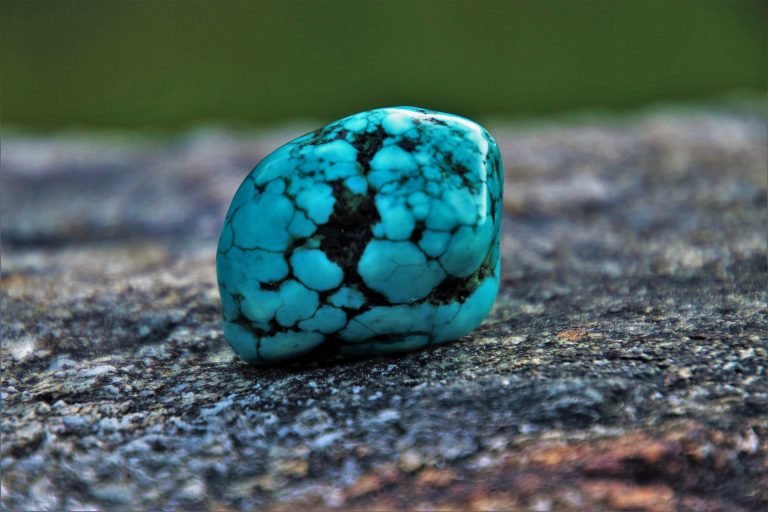Turquoise has been one of the most revered gemstones throughout history and in many parts of the world for its aesthetic and cultural significance.
This beautiful bluish-green gemstone is a hydrous phosphate that consists of copper and aluminum, mainly used in jewelry and ornaments. The word “turquoise” comes from the French word pierre tourques, which means “Turkish stone” after Turkish traders introduced it to Europe in the 13th century.
The earliest known mention of turquoise can be traced back to 7500 BCE when the Egyptians mined the stone in the Sinai Peninsula in Egypt. Since then, the stone has found its way across the world and exerted cultural and spiritual influences among many civilizations.
History of turquoise
In ancient Egypt, turquoise was associated with Hathor, the goddess of motherhood, dance, and music. It was believed that the stone had the power to protect the dead on their journey to the afterlife, which is why turquoise was commonly found in tombs and burial objects. In fact, it was used to decorate the burial mask of the pharaoh Tutankhamun.
The Persians believed that the stone symbolized the connection between heaven and earth and represented pirouzah (victory). It was said that turquoise jewelry would change color when the wearer was in danger.
Success
You are now signed up for our newsletter
Success
Check your email to complete sign up
Hence, they would decorate their palace domes, turbans, weapons, and even horses’ bridles with the sky-blue color of the shimmering stone, believing the protective powers of the stone would shield people from danger and evil forces. This would eventually inspire the decorations incorporated into the construction of the Taj Mahal centuries later.
The Aztecs also treasured turquoise, which they called chalchihuitl. They believed the stone possessed healing properties that could cure disease and could bring strength, prosperity, and victory in battle. Turquoise was even used in Aztec sacrificial rituals as offerings to gods in return for good health.
“They valued the stone more than the Spaniards valued emerald and gold,” said Spanish historian Bernal Diaz del Castillo.
Native American folklore
While important to the world, turquoise is very prominent in Native American cultures for several reasons. Some tribes believe the gem was created from the mixture of rain and tears from ancestors seeping into the earth, and others say the stone helped to form life on Earth.
A Navajo legend describes the female goddess Estsanatlehi, who symbolizes creation, protection, and abundance, appearing in the form of a drop of turquoise. Other legends say that she resides in a turquoise house and wears turquoise jewelry.
The Navajo use the gem to celebrate birth and marriage ceremonies, initiations, and healing rituals. They also believe turquoise can be used to search for water, to heal and protect from illness, and to help wearers communicate and think more clearly. Turquoise is also believed to prevent misfortune and thunderstorms, absorbing the negative energy targeting the wearer.
Because of turquoise’s ability to change color depending on its surroundings, Zuni people use it for prophecy and divining. The stone is said to represent Awonauilona, the miraculous power of the Sun. Pueblo dancers wear the gem to invite rain for their crops, in hopes of a plentiful harvest.
The powers and symbolism of turquoise
For many, the stone is said to represent wisdom (self-realization and creativity), tranquility (peaceful sensations), and protection (courage and safety). In Feng Shui, turquoise is said to express the beauty of the water element, used to gain wealth and improve health and well-being.
Turquoise is also believed to possess magical healing powers and good luck when worn as jewelry, shielding the body and mind from pain and negativity. It is also used as a Zodiac birthstone for Sagittarians, who are often positive, optimistic and curious about the world around them.
From the mines of Egypt to wrists today, turquoise continues to promote good health and luck to those who believe in its power. According to an Arabic proverb, “A turquoise given by a loving hand carries with it happiness and good fortune.”















